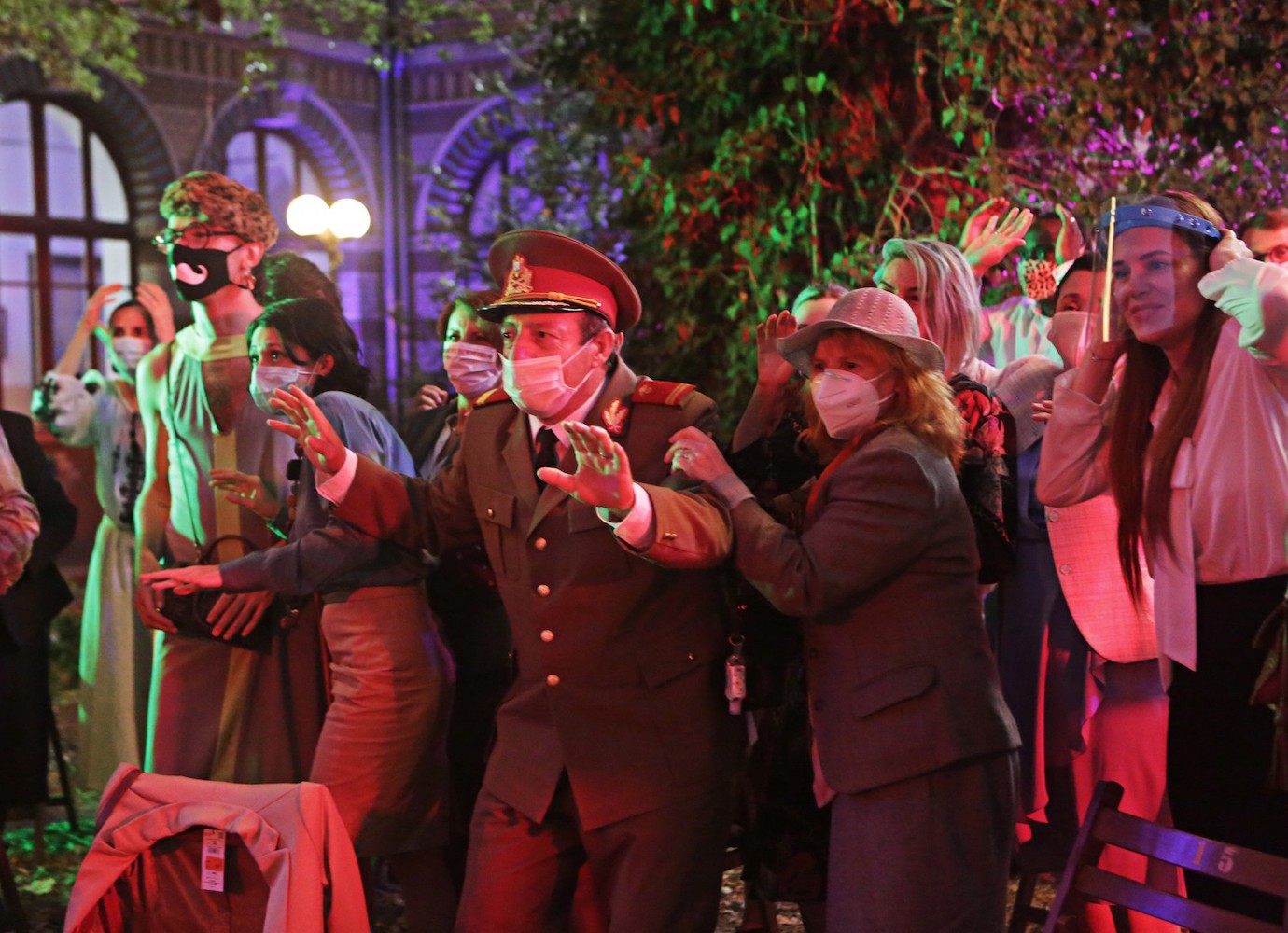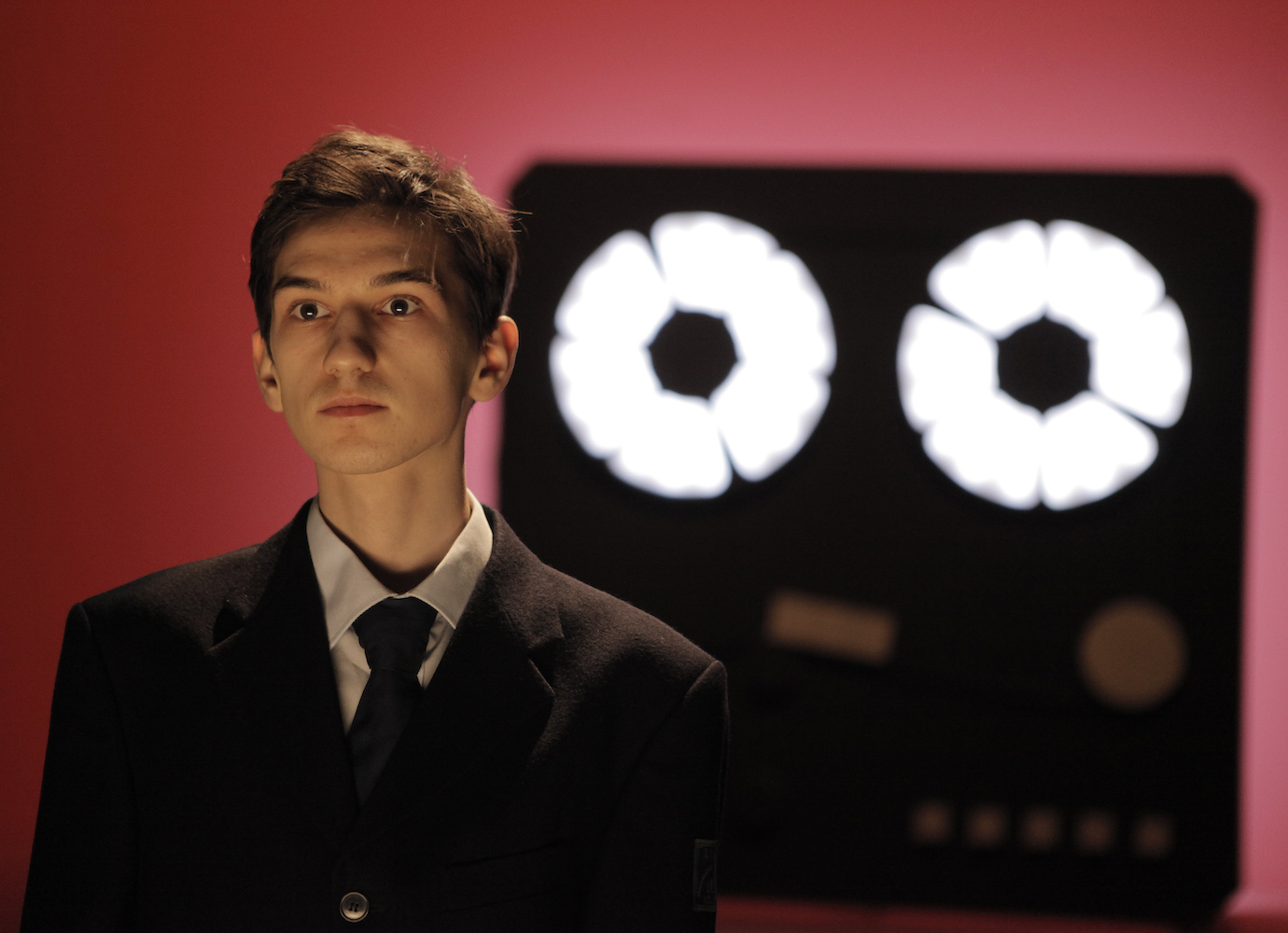Radu Jude: where to start with his films
With a distinctive curatorial, yet brazen and acerbically humorous approach to cinema, Romanian filmmaker Radu Jude is best-known for his often contentious habit of turning an unflinching eye toward the darker side of his country’s past. Jude’s concern is less with facts and more with interpretation: how ideologies of the past translate into ideologies of the present. “As an artist, you don’t have the obligation of a historian,” he told journalists while explaining his licence to montage the present with the past.
Born in Bucharest in 1977, Jude was rejected from Romania’s more prestigious National Film School three times before studying in the Film Directing Department of the Media University of Bucharest. From early on, he was classed among the emerging Romanian New Wave, and Jude worked as assistant director to Cristi Puiu on the film credited with drawing global attention to the movement, The Death of Mr Lăzărescu (2005). A product of the country’s shrinking cinema production and funding in the years that followed the end of communism, the Romanian New Wave — which also included directors Corneliu Porumboiu and Cristian Mungiu — was characterised by its stark realism, dark comedy, and fondness for anti-heroes. The widespread poverty and instability of late-communism, problems that would continue and develop all the way to the mid-00s, were partly responsible for the New Wave’s kitchen-sink realism.
Jude’s breakthrough short film The Tube with a Hat garnered 50 prizes across film festivals. But by 2015, the director’s feature release Aferim! saw Jude veer sharply away from the realism that defined the Romanian New Wave. A high-budget historic drama, Aferim! marked the start of Jude’s obsession with national identity, montage, and toying with the conventionally cinematic. While most filmmakers aim to immerse their viewers in their fictional worlds, Jude aspires to the opposite. Taking after Walter Benjamin’s idea of “the optical unconscious”, Jude constantly reminds the viewer that what they see on-screen is an illusion. In order to achieve this effect, the filmmaker imbues his cinematic works with techniques borrowed from literature and theatre — whether that is breaking the story through literary title cards, using literary references, or having deliberately exaggerated acting against the backdrop of two-dimensional staged design, reminding of a show on stage. Indeed, Eric Rohmer’s notion “that words should belong to cinema” has been a key influence on the director.
Jude’s latest, Bad Luck Banging or Loony Porn, which scooped the Golden Bear at this year’s Berlinale, brings his corpus, which has had a historical focus so far, right up to date, dissecting the role of social media when a teacher’s sex tape is leaked. Before you watch Bad Luck Banging or Loony Porn, here is our guide on where to begin with Jude’s work.
Aferim!
In Aferim! (the Ottoman Turkish word for “bravo”), a constable and his son scour Wallachia for an escaped Roma slave. Its script reworks 19th century historical documents and popular literary texts, laying bare the racism and antisemitism of the period. Its premise is intrinsically ironic – though the protagonists are two police officers, we witness the lawlessness of the open country, in which the officers themselves take part, and where the real criminals are the rich and the powerful.
This is not a typical costume drama. Pre-empting the spiky, modern, and self-mocking period dramas now popular globally, Jude harnesses artificiality rather than historical realism, in a bid to make his message clearer. The film’s slight surrealism has earned comparisons to Tarkovsky’s Andrei Rublev and Sergio Leone’s Westerns. The first films Jude saw in the Cinematheque were in black-and-white (despite originally being in colour); perhaps this played a part in this timeless epic about the most vulnerable people at the mercy of a corrupt system.
Scarred Hearts
With its elaborate sets, stunning costumes, and soft tableaux-style visuals, this 2016 film feels set apart from Jude’s other work – though similarly disparaging about Romanian history. Loosely adapted from the works of Jewish Romanian authors Max Blecher and Mihail Sebastian, the film tells the story of Blecher as a young chemistry student suffering from spinal tuberculosis in the 1930s. The sanatorium where he resides becomes microcosmic; the ebullient Jewish patient witnesses the rise of fascism from within its oppressive walls. After the fall of communism, this pre-war period was idealised as Romania’s “Golden Age” of intellectualism. Jude’s aim is to debunk this.
With interruptive title cards, Blecher’s own sketches, and a slew of textual references, this was the start of the juxtaposition integral to Jude’s future films. Jude received heavy criticism for politicising Blecher’s work, though exposing 1930s anti-Semitism was Jude’s main motivation. Its modern perspective is foregrounded, with the last scene showing Blecher’s grave in the eastern Romanian town Roman. This is also the cemetery in which hundreds of Jews, killed in the “death trains” of Iaşi in 1941, are buried.
I Do Not Care If We Go Down in History as Barbarians
A film within a film, the topic of this metatheatrical work is the problematic nature of filmmaking itself. Its title quotes Marshal Ion Antonescu’s words before the murder of 38,000 Romanian Jews, 10,000 of which died in the 1941 Odessa Massacre. Jude’s single-minded protagonist is director Mariana Marin, whose task is to re-create Odessa’s shocking military history for the public. She is confronted with problems on all sides: her actors and a local official are unhappy with her version of events, her audience misunderstands, and even her closest colleagues fail to take the history seriously. Laughter is unexpectedly pervasive in this film which accosts us with the uncomfortable minutiae behind a military re-enactment. A long mock-intellectual conversation takes place, in which Wittgenstein and Marx are summoned to justify opposing viewpoints. The spread of misinformation, appropriation, and art’s inability to impact social change are dissected in Jude’s most controversial work.
Uppercase Print
Based on Romanian playwright Gianina Cărbunariu’s play from 2012, the script is taken directly from Romania’s communist secret services (Securitate) case file of a young student, Mugur Călinescu. Unlike Jude’s previous work, Uppercase Print is shot digitally, lending it a cold, pristine hardness. Building on Jude’s interest in dramaturgy, the dialogue, performed in an unemotional, recitative manner, was filmed on a theatre set within only six days. Revealing the hidden case files of the secret police, this material is spliced together with National Television Archive footage, matched to the dialogue by date. Through this juxtaposition, the hypocrisies and ironies of propaganda’s emphasis on unity and youth as “the future” are exposed. The truth about Romania’s poverty peeps through the cracks. As with I Do Not Care If We Go Down In History as Barbarians, the viewer’s complicity as voyeur is interrogated as the tiniest details about Călinescu’s life unravel with tragic banality.


